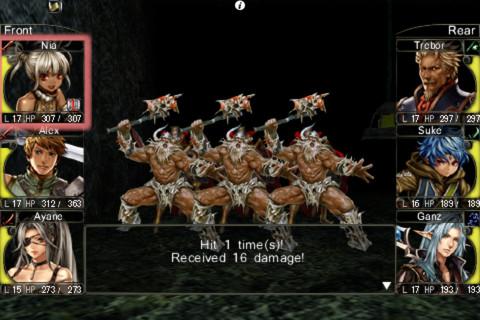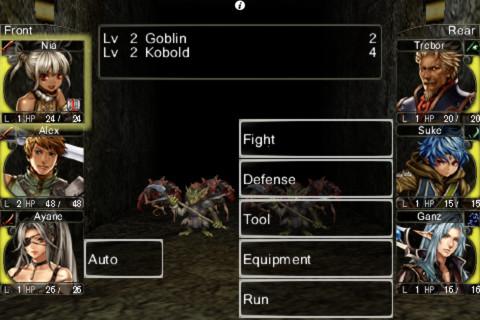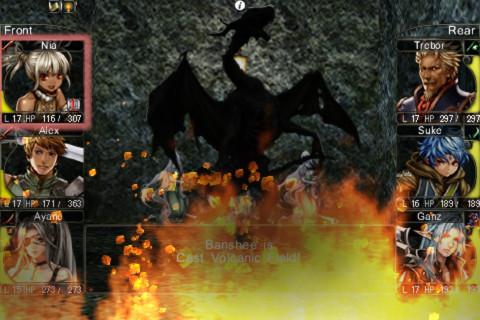- Wondering how to get Monopoly GO! free rolls? Well, you’ve come to the right place. In this guide, we provide you with a bunch of tips and tricks to get some free rolls for the hit new mobile game. We’ll …
Best Roblox Horror Games to Play Right Now – Updated Weekly
By Adele Wilson
Our Best Roblox Horror Games guide features the scariest and most creative experiences to play right now on the platform!The BEST Roblox Games of The Week – Games You Need To Play!
By Sho Roberts
Our feature shares our pick for the Best Roblox Games of the week! With our feature, we guarantee you'll find something new to play!All Grades in Type Soul – Each Race Explained
By Adele Wilson
Our All Grades in Type Soul guide lists every grade in the game for all races, including how to increase your grade quickly!
Wizardry: Labyrinth of Lost Souls Review
There’s been a lot of anticipation surrounding Wizardry: Labyrinth of Lost Souls’ arrival on iOS. The 30-year-old franchise’s first entry onto Apple devices seems like a match made in heaven. Unfortunately, the game actually feels like it’s something that was developed in some infernal lair, far below the dungeons you find yourself wandering through.

Wizardry feels like it should be a lot more magical than it actually is
There’s been a lot of anticipation surrounding Wizardry: Labyrinth of Lost Souls’ arrival on iOS. The 30-year-old franchise’s first entry onto Apple devices seems like a match made in heaven. Unfortunately, the game actually feels like it’s something that was developed in some infernal lair, far below the dungeons you find yourself wandering through.
Wizardry: Labyrinth of Lost Souls takes place on the world of Althas, which has seen more than its fair share of supernatural problems. When you start the game, a thousand years of peacetime have gone by, but things are starting to go terribly wrong, and monsters are popping up all over the place. Of course you’re too much of an overachiever to let someone else take care of these problems. So before you can say “first-person dungeon-crawler”, it’s off to the big city to face down the demonic hordes.

At least, I think that’s what’s going on. It’s kind of tough to learn the overall story, thanks to how tiny the text is on the screen. On the iPhone’s Retina display, it’s much too small to read easily. Meanwhile, because Wizardry: Labyrinth of Lost Souls isn’t universal yet (surprising, seeing as how the full app unlock costs $9.99), you can only enlarge the game from its original resolution to fill the larger screen of the iPad; this means that the graphics are rather jagged and the text is equally frustrating to read as it simply wasn’t designed to support a larger device.
It’s also a pain to learn just what you’re supposed to do in the game, thanks to the fact that it just drops you in the middle of the story without any explanation or tutorial about how things work. Actually, no, that’s not entirely true: there is a quick, text-heavy, slideshow that explains the controls and basic gameplay, but it’s only accessible from the main menu. If you start playing the game though, there’s no way to reference the instructions. You’re just left to tap through the somewhat confusing menus and try to figure out things on your own. Eventually you’ll discover the Adventurer’s Guild, take on your first assignment, and then head to the local dungeons to slay some monsters.

One of the big problems with these dungeons is how poorly the navigation is handled; it’s practically impossible to tell where you’re going or where you’ve been unless you buy a map from the item shop. Even then, the map doesn’t really give you a layout of what’s within the area you’re wandering through, it only shows you the portions you’ve wandered through. Why can’t your adventurers just keep track of their paths on their own? They can’t even claim ignorance of the written word, since they keep reading messages left behind by other explorers.
Additionally, the dungeons are just bizarre. It’s not uncommon to wander off one edge of the map and then find yourself warped straight to the other side of the aisle you were wandering down. There’s no explanation for this, and it’s impossible to notice unless you’ve purchased a map. Also, don’t be too surprised if you wind up finding enemies who are way more powerful than your entire party. My first time as a Level 1 thief, I stumbled across a Level 12 banshee that made mincemeat out of me while I was exploring the trainee dungeon.
Wandering through the dungeons themselves is a mixed experience. The first-person perspective, complete with 3D environments, is surprisingly ugly to look at. This is a bizarre juxtaposition when you compare it to the gorgeous painted portraits and monsters that appear on the screen at the same time (or, alternately, the insanely detailed illustrations that appear on the various menus in the city above ground). Meanwhile, tapping on the screen will move you forward, while swiping your finger will turn you right or left. That last part is regularly problematic, especially if you have a fully-stocked party of adventurers at your command. By swiping your finger, you’ll often wind up selecting a character by accident and bring up their statistics (whether you move or change position in addition to the selection seems to be entirely random).

Combat, meanwhile, is an old-school blast. You randomly discover enemies during your explorations, and wind up engaged in turn-based battles where you assign actions to each member of your party. At first, you can just have everyone in your group attack and beat the ever-loving snot out of your enemies. After a little while though, you have to start being smart with your characters’ actions and figure out who should defend against an attack, who should cast what spell, and who should engage in some good old fashioned hack-and-slash tactics.
It’s fairly obvious that Wizardry: Labyrinth of Lost Souls is a mediocre port of a console game. It feels like a game that belongs on a much larger screen, without a touch-based interface. That’s too bad. Beneath the clunky controls, the low-resolution graphics, and the lack of intuitive gameplay, I’m pretty sure that there’s something special here. Unfortunately, I’m not certain that it’s worth the time or frustration to discover just what that something is.

The good

The bad
More articles...
Monopoly GO! Free Rolls – Links For Free Dice
By Glen Fox
Wondering how to get Monopoly GO! free rolls? Well, you’ve come to the right place. In this guide, we provide you with a bunch of tips and tricks to get some free rolls for the hit new mobile game. We’ll …Best Roblox Horror Games to Play Right Now – Updated Weekly
By Adele Wilson
Our Best Roblox Horror Games guide features the scariest and most creative experiences to play right now on the platform!The BEST Roblox Games of The Week – Games You Need To Play!
By Sho Roberts
Our feature shares our pick for the Best Roblox Games of the week! With our feature, we guarantee you'll find something new to play!All Grades in Type Soul – Each Race Explained
By Adele Wilson
Our All Grades in Type Soul guide lists every grade in the game for all races, including how to increase your grade quickly!







